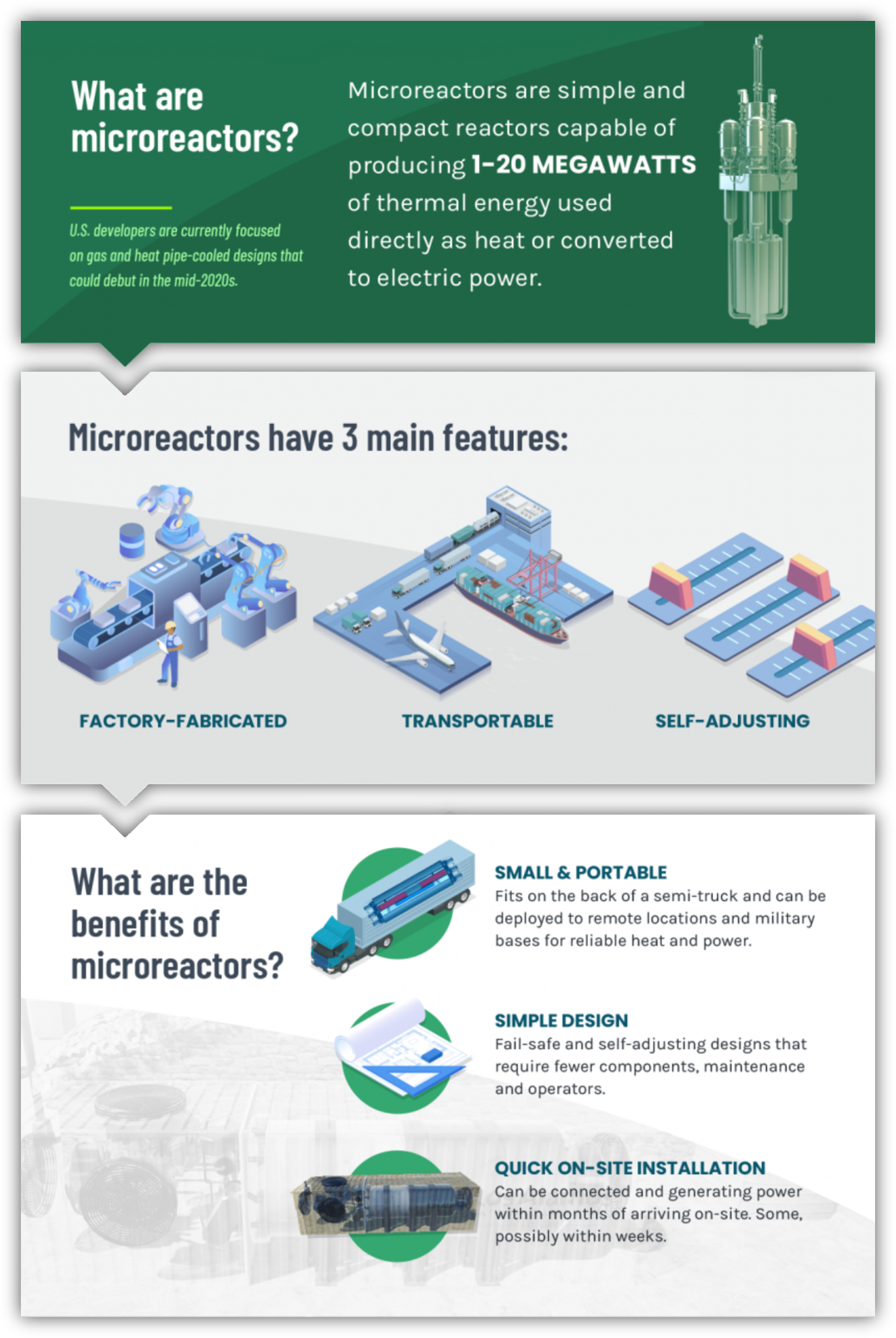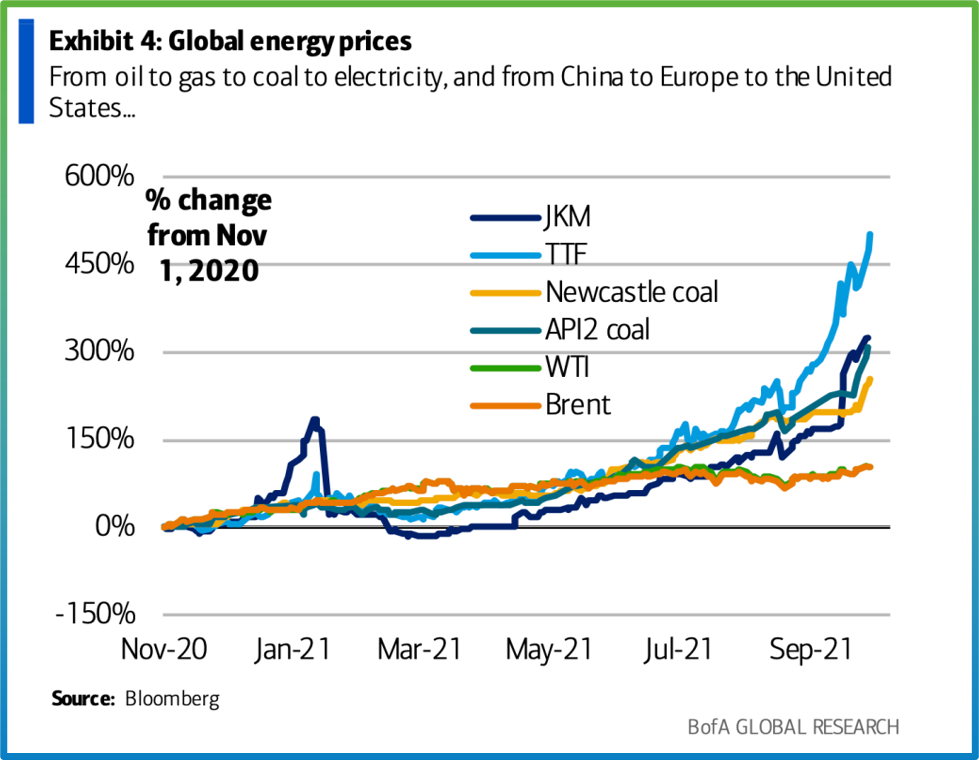Emerging Technology – Microreactors
Nuclear is getting smaller … and it’s opening up some
big opportunities for the industry.
A handful of microreactor designs are under development and they could be ready to roll out within the next decade.
These compact reactors will be small enough to transport by truck and could help solve energy challenges in a number of areas.
Microreactor would produce 1-20 megawatts of thermal energy that could be used directly as heat or converted to electric power. They can be used to generate clean and reliable electricity for commercial use or for non-electric applications such as district heating, water desalination and hydrogen fuel production.
Important Market Developments:
- INL and the National Reactor Innovation Center (NRIC) are enabling developers by providing technical resources, capabilities and a demonstration site
- Technology advancements and experience provide improved microreactor designs
- The federal government is supporting development through funding and legislation
- The U.S. advanced reactor industry is developing several microreactor concepts

Other Benefits:
- Seamless integration with renewables within microgrids
- Can be used for emergency response to help restore power to areas hit
by natural disasters - A longer core life, operating for up to 10 years without refueling
- Microreactors have characteristics that enable rapid deployment and removal
- Microreactors can be “right-sized” to location and are easily scalable

Current Global Energy Crises
Un-diversifying its base-load power supply away from dirty coal while also dumping nuclear, which has led to consequences such as:
-
- overreliance on Russian natural gas
- Frantic bidding wars with China for liquefied-gas shipments
- Home-heating and electricity prices up 300% at the wholesale level since last winter
Europe falls short of sustainability benchmarks:
-
- Europe has adopted 1990 as its emissions baseline.
- Since then Europe claimed 20% reduction in emissions
- Yet, the world increased its total emissions 50% overall
- Investors simply relocated their emissions-heavy processes to places outside the EU
- Asia – importers of liquefied natural gas are paying record prices for this time of year to secure supplies, with some starting to snap up dirtier fuels such as coal and heating oil in case they don’t obtain enough
- Kazakhstan – protests about gas prices rapidly spread, turning into wider discontent about how the country is run. It is home to the world’s largest producer of uranium, Kazatomprom
- USA – Rising crude oil prices and increased gasoline demand contributed to the average U.S. retail price for regular grade gasoline increasing to $3.01 per gallon (gal) in 2021, the highest average nominal price since 2014
- Brazil – the lowest flows to the Parana River Basin in almost a century have slashed hydropower output and forced utilities to rely more heavily on gas

Sources – Wall Street Journal & Bloomberg
Latest News
No Results Found
The page you requested could not be found. Try refining your search, or use the navigation above to locate the post.
